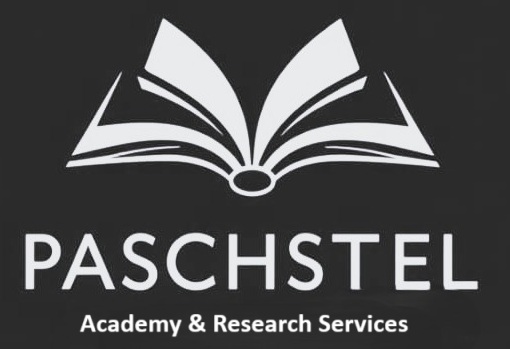The Power of AI in Post-Secondary Education Teaching in Canada
Artificial Intelligence (AI) is revolutionizing post-secondary education in Canada, offering innovative solutions to enhance teaching and learning in a diverse and geographically expansive nation. As Canadian colleges and universities strive to address the needs of students, align with workforce demands, and promote equity in education, AI emerges as a transformative tool. From personalized learning to administrative efficiency, AI is reshaping how educators deliver instruction, engage students, and assess performance. This essay explores the impact of AI in post-secondary education teaching within the Canadian context, highlighting its potential to enhance pedagogy, foster inclusivity, and prepare students for the future, while addressing challenges and ethical considerations.
Personalized Learning and Adaptive Teaching
In Canada’s post-secondary institutions, where student populations are increasingly diverse, AI-powered adaptive learning systems cater to individual learning needs. Platforms like Smart Sparrow or Nelson’s Edwin analyze student performance data to tailor content and assessments, accommodating varied learning styles and backgrounds. For example, a student at the University of British Columbia might receive customized math exercises that adjust in difficulty based on their progress, ensuring they remain engaged without feeling overwhelmed.
These tools allow Canadian educators to focus on fostering critical thinking and mentorship, while AI handles repetitive tasks like grading or identifying knowledge gaps. AI-driven virtual tutors, powered by natural language processing (NLP), provide 24/7 support, which is particularly valuable for students in remote areas like Northern Ontario or the territories, where access to instructors may be limited. For instance, Athabasca University, a leader in online education, could leverage AI to offer personalized feedback to distance learners, enhancing their academic experience.
Enhancing Engagement Through Immersive Technologies
AI enhances student engagement in Canadian post-secondary education through immersive technologies like virtual reality (VR) and augmented reality (AR). In fields like nursing, engineering, or Indigenous studies, AI-driven simulations provide hands-on learning opportunities. For example, at McGill University, medical students can use AI-powered VR to practice surgical techniques, receiving real-time feedback. Similarly, engineering students at the University of Toronto might engage in AI-enhanced simulations to design infrastructure, bridging theory and practice.
Gamification platforms like Kahoot!, integrated with AI, create dynamic and engaging review sessions, widely used in Canadian institutions like Ryerson University. These tools foster active participation, particularly in large lecture halls, and support Canada’s emphasis on student-centered learning. For Indigenous students, AI-driven cultural simulations could incorporate traditional knowledge, aligning with reconciliation efforts in institutions like the University of Manitoba.
Streamlining Administrative and Assessment Processes
AI streamlines administrative tasks in Canadian post-secondary institutions, allowing faculty to prioritize teaching. Automated grading systems, such as Gradescope, are used at universities like the University of Waterloo to provide consistent and objective evaluations for assignments and exams. For subjective tasks like essays, AI tools like Turnitin’s Revision Assistant offer feedback on structure and argumentation, supporting students in programs like English at Queen’s University.
AI-powered chatbots handle routine inquiries about course schedules, financial aid, or campus services, reducing administrative burdens. For example, the University of Alberta could deploy a chatbot similar to Georgia State’s Pounce to assist students with navigating OSAP (Ontario Student Assistance Program) applications or course registration. Such tools are particularly beneficial in Canada’s decentralized education system, where institutions vary in resources and infrastructure.
Promoting Inclusivity and Accessibility
AI plays a critical role in making Canadian post-secondary education more inclusive, aligning with the country’s commitment to equity and diversity. For students with disabilities, AI-driven tools like real-time captioning (e.g., Otter.ai) ensure accessibility to lectures at institutions like Dalhousie University. Text-to-speech and speech-to-text technologies support students with visual or motor impairments, while AI-powered translation tools help international students, who make up a significant portion of Canada’s post-secondary population, engage with content in their preferred language.
Predictive analytics tools identify students at risk of dropping out, a pressing issue in Canada where retention rates vary across provinces. For example, Mount Royal University in Calgary could use AI systems like Purdue’s Course Signals to flag students needing support, particularly those from underrepresented groups such as Indigenous or first-generation students. These interventions align with Canada’s Truth and Reconciliation Commission’s calls to action, ensuring equitable access to education.
Preparing Students for Canada’s Workforce
AI helps Canadian post-secondary institutions align curricula with the needs of the country’s dynamic economy, which emphasizes sectors like technology, healthcare, and clean energy. AI tools analyze labour market trends, enabling universities like Simon Fraser to update programs in fields like computer science or environmental studies. Platforms like IBM’s SkillsBuild recommend skills and certifications based on industry demands, preparing students for roles in Canada’s growing tech hubs in Toronto, Vancouver, and Montreal.
Virtual internships and AI-driven simulations, such as those offered by Forage, allow students to gain practical experience. For example, business students at Western University could participate in virtual work experiences with Canadian firms, enhancing employability. These tools are particularly valuable in Canada, where co-op programs and work-integrated learning are integral to post-secondary education.
Ethical Considerations and Challenges
The integration of AI in Canadian post-secondary education raises ethical concerns, particularly around data privacy. With Canada’s stringent privacy laws, such as PIPEDA (Personal Information Protection and Electronic Documents Act), institutions must ensure student data is securely handled. For example, universities like McMaster must transparently communicate how AI systems use data for personalized learning or predictive analytics.
Bias in AI algorithms is another challenge. If training data reflects historical inequities, such as underrepresentation of Indigenous students, AI systems may perpetuate these disparities. Canadian institutions must prioritize fairness in AI development, aligning with national values of equity and inclusion. Additionally, over-reliance on AI risks diminishing the human connection in teaching, which is vital in Canada’s collaborative and community-focused educational culture.
The Future of AI in Canadian Post-Secondary Teaching
Looking forward, AI’s role in Canadian post-secondary education is set to grow. Advances in generative AI could enable sophisticated virtual tutors, supporting research-intensive programs at universities like UBC or Laval. Integration with blockchain could secure credentialing, allowing students to share verified micro-credentials with employers, a trend gaining traction in Canada’s skills-focused job market.
Collaboration between educators, technologists, and policymakers is essential to maximize AI’s benefits. Faculty training programs, like those offered by the University of Calgary, can equip instructors to integrate AI effectively. Research initiatives, such as those at the Vector Institute in Toronto, can address ethical and technical challenges, ensuring AI aligns with Canada’s educational priorities, including reconciliation and sustainability.
Conclusion
AI is transforming post-secondary education teaching in Canada by personalizing learning, enhancing engagement, streamlining processes, and promoting inclusivity. From supporting remote learners in Nunavut to preparing tech professionals in Waterloo, AI addresses the unique challenges of Canada’s diverse and decentralized education system. However, its adoption must be guided by ethical principles to ensure privacy, fairness, and the preservation of human-centered teaching. By leveraging AI thoughtfully, Canadian institutions can create equitable, engaging, and future-ready educational experiences, strengthening the nation’s commitment to accessible and innovative higher education.



